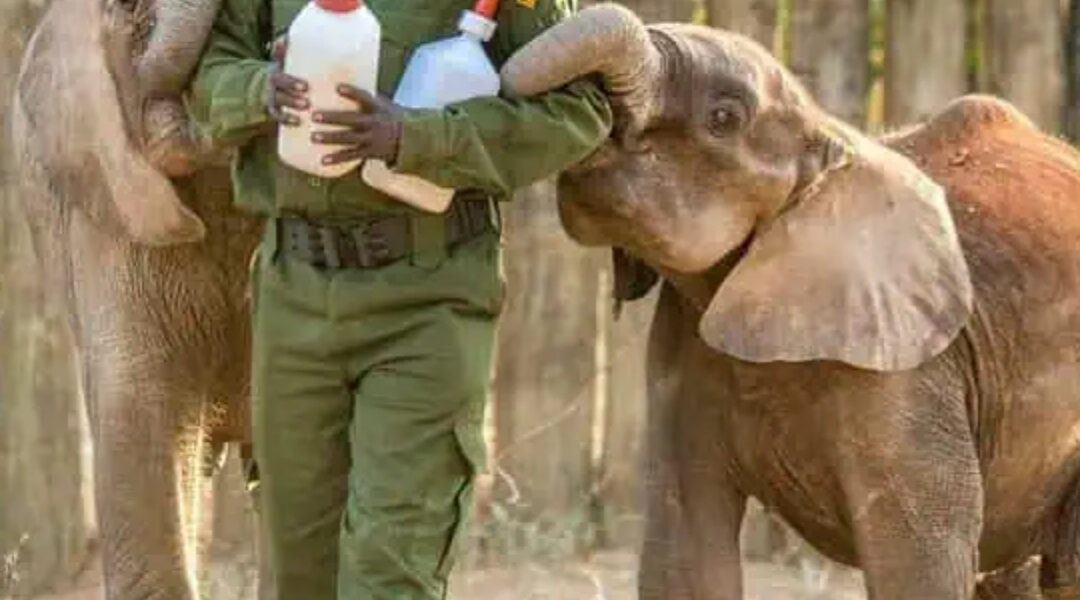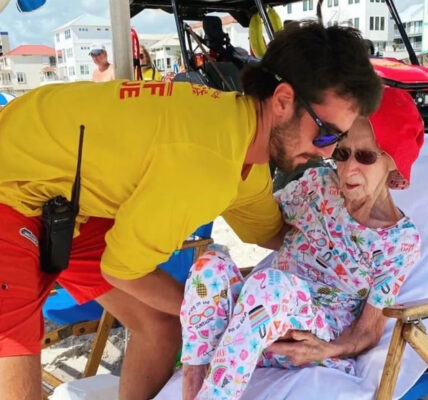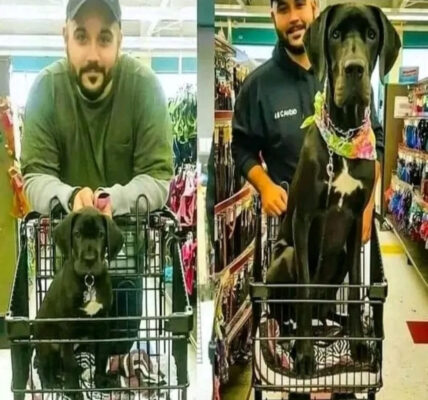There are few sights more touching than a baby elephant — small, wrinkled, unsteady on its feet, yet full of life and curiosity. But for many calves orphaned by poaching, drought, or human conflict, survival without their mothers is nearly impossible.
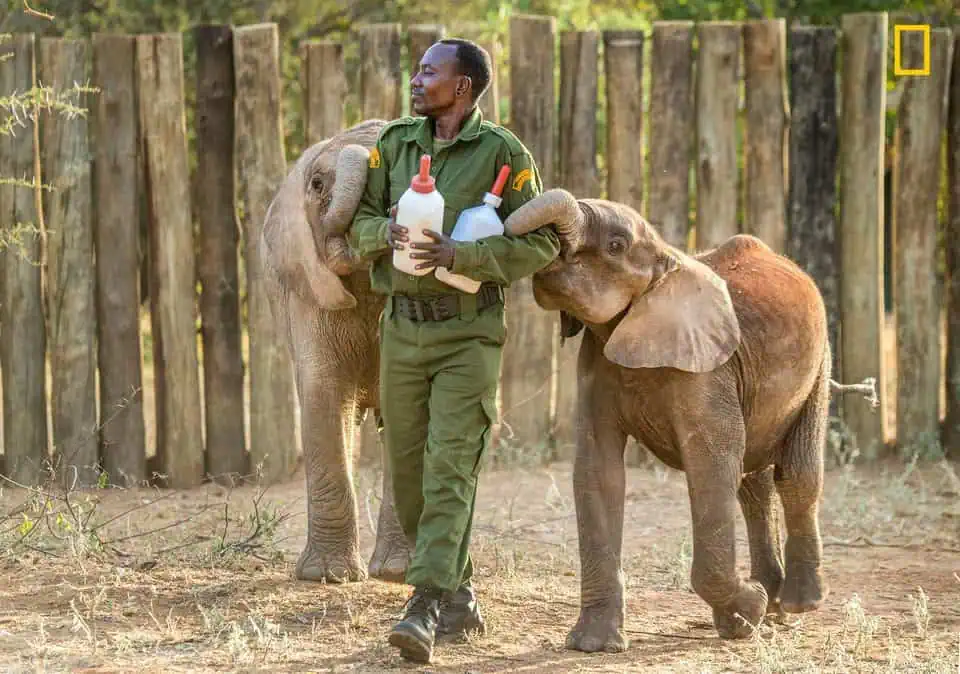
That’s where a special kind of human love steps in — the love that builds families across species.
Raising a baby elephant from a fragile four-month-old to a confident four-year-old is no small task. It is a journey that demands patience, tenderness, and a deep understanding of what it means to care — not as a zookeeper or trainer, but as family.
When a rescued calf first arrives, it is often weak, dehydrated, and emotionally traumatized. Elephants, like humans, are deeply social creatures. Losing a mother — the center of their world — leaves a wound that goes far beyond the physical.
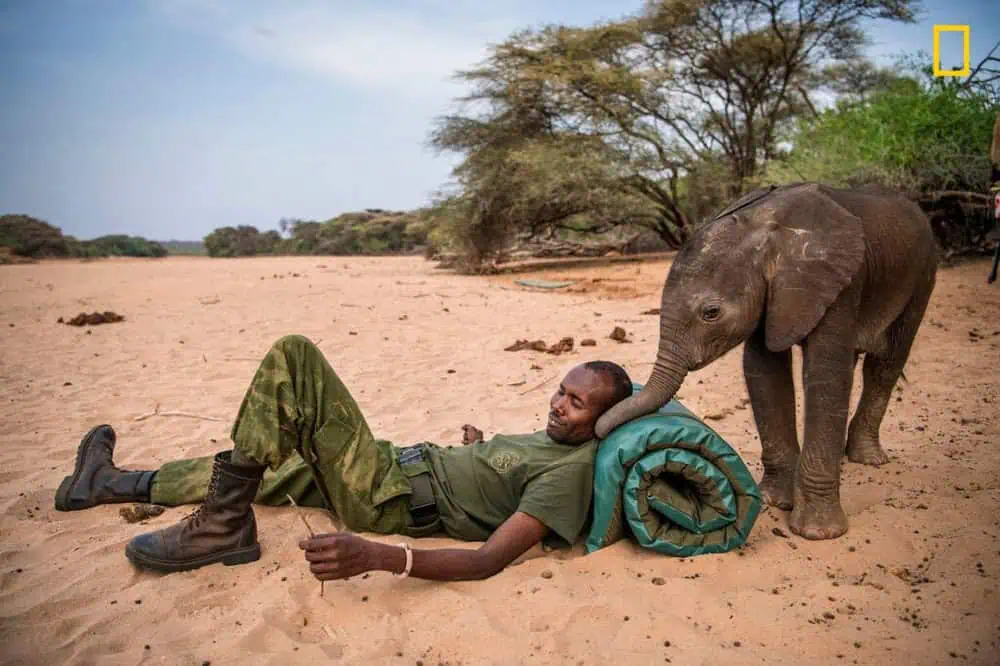
They mourn, refusing to eat, often crying softly for days. Caretakers know that the first step toward healing isn’t just feeding — it’s comforting.
Someone stays by the calf’s side every hour of the day and night. They gently touch its trunk, speak softly, and stay close enough for the baby to feel a heartbeat nearby. For elephants, touch is language — a way to say you’re safe now.
At this stage, the calf relies completely on milk. Caretakers mix special formula every few hours, even through the night, warming it to just the right temperature. They carry the large bottles into the enclosure, calling the calf by name. Over time, the baby begins to recognize those voices — and trust returns, one feeding at a time.
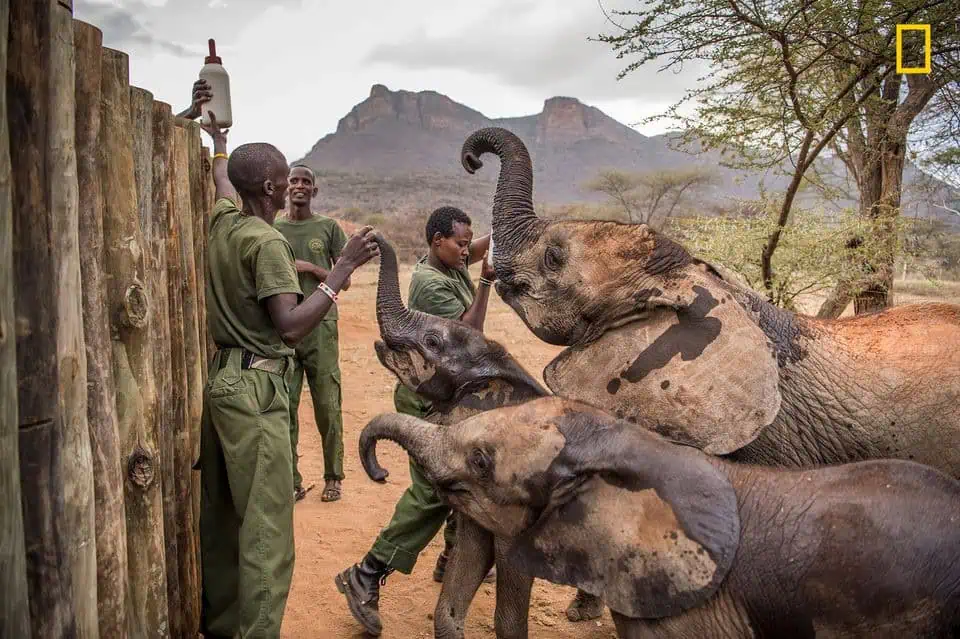
Once that trust is built, the real journey begins.
Each day is filled with small adventures. Morning walks through the grass, playful rolls in the mud, and naps under the trees that remind them of the wild. Caretakers encourage them to explore but always remain nearby, just like a herd would.
They teach them to use their trunks — how to pick up fruit, toss dust, or splash water. Sometimes, the calves are clumsy, spraying water everywhere or tripping over their own feet. But laughter fills the air; patience is endless.
Beyond the physical care lies something even more important: the emotional and social development that defines elephant life. Young elephants learn through imitation and companionship, so sanctuaries form small herds of calves, allowing them to grow up together. They play, wrestle, and nap side by side, trumpeting joyfully as they begin to feel like part of something again.
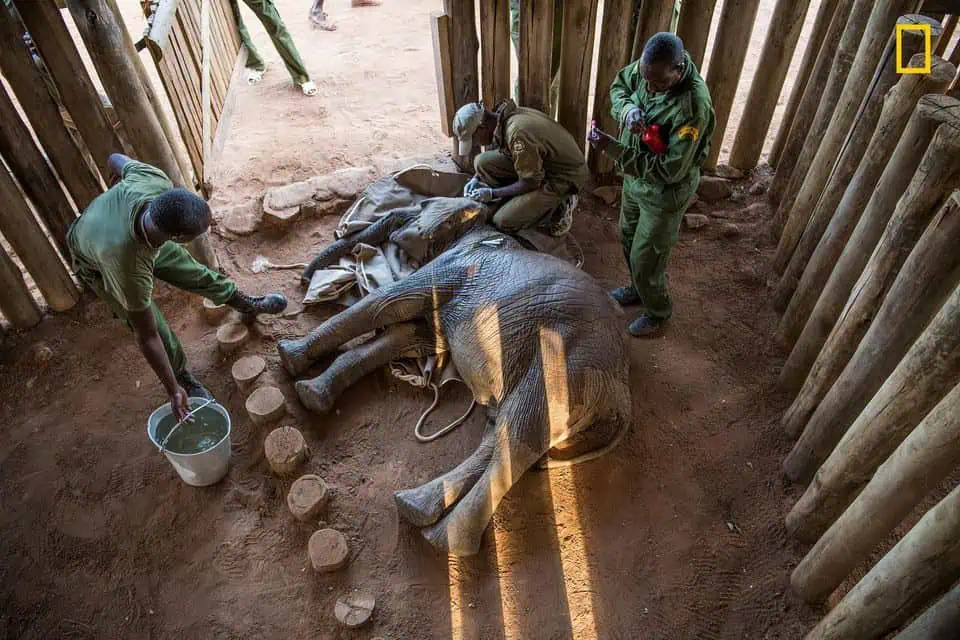
Caretakers often describe these herds like classrooms — each elephant learning not just survival, but empathy. They comfort one another when frightened, share food, and even wrap their trunks around a friend who’s crying. It’s this emotional intelligence that makes elephants so extraordinary — and so heartbreakingly human.
By the time the calves reach one year, they’ve developed personalities as distinct as any child. One may be fearless and curious, wandering ahead on every walk. Another might be shy, always sticking close to its human family. There are troublemakers too — the ones who steal fruit, splash mud, and tease the caretakers at every opportunity.
But as they grow older, the caretakers’ role shifts from protection to preparation. At two years old, the young elephants begin to rely less on formula and more on natural foods — tender leaves, fruit, bark, and grasses. Their bodies strengthen, and their tusks begin to show.
They learn to communicate more, using low rumbles that vibrate through the ground, forming their first “conversations” with each other.

And always, there are lessons about the wild — how to dig for water in the dry season, how to read the wind for danger, how to follow the matriarch’s lead. These skills, patiently taught by their human guardians and older elephants, will one day guide them back to freedom.
At four years old, the transformation is extraordinary. The timid baby that once clung to its caretaker now stands tall — curious, social, and brave. It plays fiercely with the others, splashing through rivers and trumpeting in triumph. It has become, at last, an elephant again.
For the caretakers, these milestones are bittersweet. They’ve poured their hearts into raising each calf — sleepless nights, years of bottle feedings, countless walks through the savanna. And yet, when the time comes, they know they must let go.
Some elephants are reintroduced to protected wild reserves, joining established herds. Others remain under sanctuary care, helping raise new orphans just as they were once raised. In every case, the bond between human and elephant never truly fades.
Caretakers tell stories of returning years later, calling out softly into the bush — and hearing an answering rumble.
Out from the trees comes a towering young elephant, now wild and free, but still remembering the voice that once sang it to sleep.
These reunions prove something extraordinary: that love, given selflessly, is never forgotten.
The journey from a four-month-old calf to a four-year-old juvenile is more than a story of animal rescue. It is a reflection of everything that connects us — patience, compassion, and the universal desire to nurture life.
Because when a baby elephant learns to trust again, to play, to love, and to walk fearlessly into the wild, it reminds us of something timeless — that even the smallest acts of care can restore the balance of an entire world.
